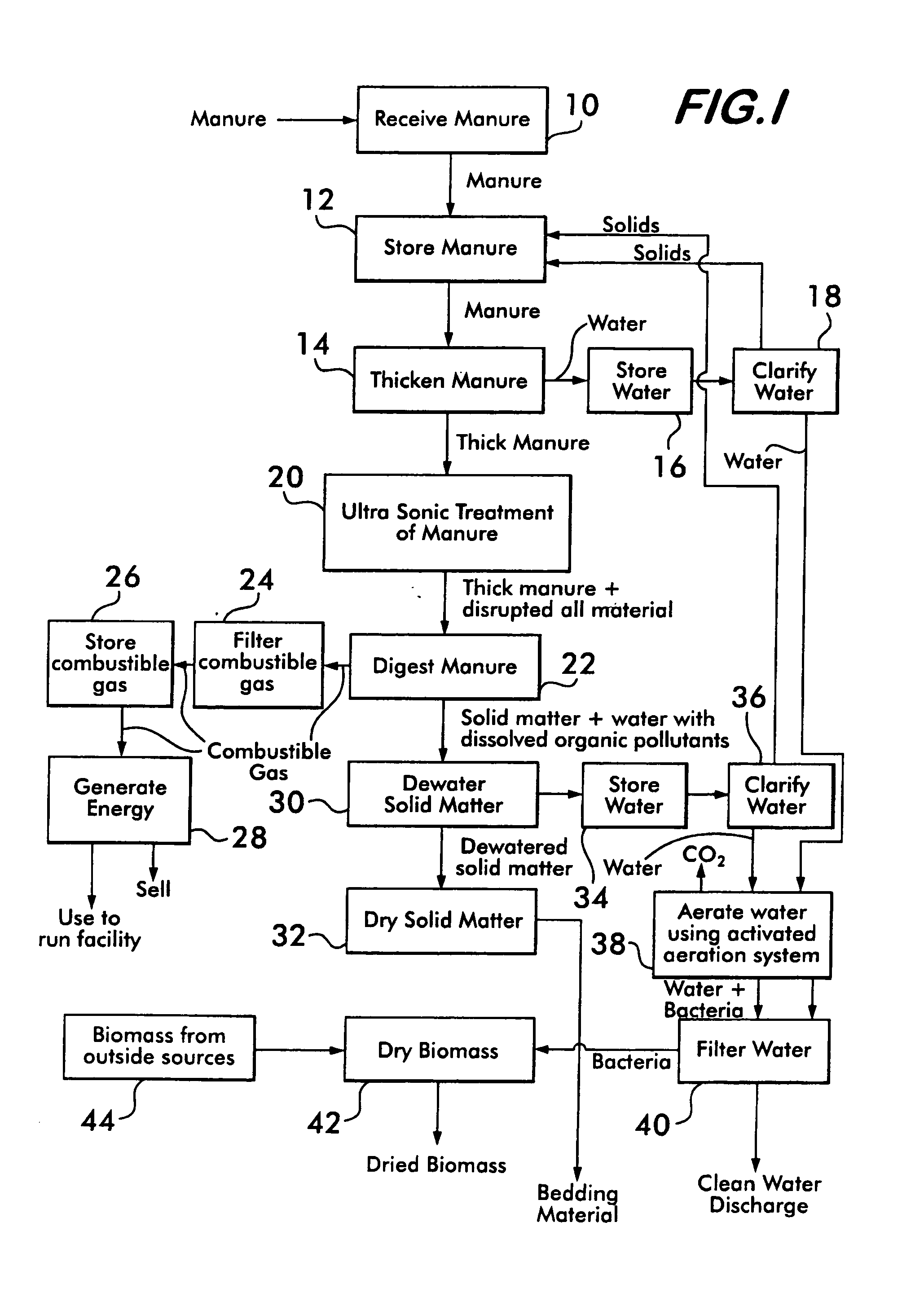Method and facility for treatment of animal waste
a technology for animal waste and treatment facilities, applied in biological water/sewage treatment, multi-stage water/sewage treatment, filtration treatment, etc., can solve the problems of large volume of waste matter produced by these operations, unfit for human consumption of water, and limited options for disposing of manure by cafos, so as to increase the production of combustible gas
- Summary
- Abstract
- Description
- Claims
- Application Information
AI Technical Summary
Benefits of technology
Problems solved by technology
Method used
Image
Examples
Embodiment Construction
[0025]FIG. 1 presents a flow diagram illustrating an embodiment of the method according to the invention for treating animal waste from a plurality of concentrated animal feed operations (CAFOs). Liquid manure is received (box 10) from the various CAFOs and pumped to a storage tank where it is stored temporarily (12). Storage of the manure post delivery is advantageous because it allows the flow rate of manure through the treatment facility to be controlled and remain substantially constant despite variations in the delivery of manure from the various feed operations. The manure is then thickened (14) by removing water, the water being temporarily stored (16) and then clarified (18). Solids separated during the clarification step are returned to the manure storage tank and the water from the clarification step is sent for further treatment, described below.
[0026]The thickened manure is subjected to an ultrasonic treatment (20) wherein sound waves are used to disrupt the cell wails o...
PUM
| Property | Measurement | Unit |
|---|---|---|
| hydraulic residence time | aaaaa | aaaaa |
| hydraulic residence time | aaaaa | aaaaa |
| generate energy | aaaaa | aaaaa |
Abstract
Description
Claims
Application Information
 Login to View More
Login to View More - R&D
- Intellectual Property
- Life Sciences
- Materials
- Tech Scout
- Unparalleled Data Quality
- Higher Quality Content
- 60% Fewer Hallucinations
Browse by: Latest US Patents, China's latest patents, Technical Efficacy Thesaurus, Application Domain, Technology Topic, Popular Technical Reports.
© 2025 PatSnap. All rights reserved.Legal|Privacy policy|Modern Slavery Act Transparency Statement|Sitemap|About US| Contact US: help@patsnap.com



